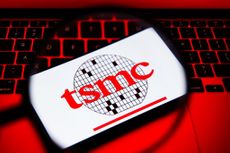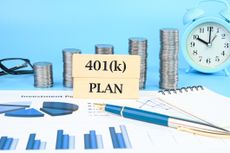20 ETF Picks to Fill the Gaps in Your Portfolio
We winnow down the thousand-plus offerings to find stock and bond funds that will help you meet your investing goals.

Two decades after the first exchange-traded fund debuted in the U.S., the field is crowded with some 1,500 ETFs holding $1.8 trillion. You don’t need most of them. For example, WisdomTree Japan Interest Rate Strategy ETF, which tracks the performance of U.S. Treasury bills relative to Japanese government bonds, isn’t exactly essential.
But the right ETFs can be perfect for filling gaps in your portfolio. Do you need to beef up on foreign stocks? Want to make a bet on companies that will benefit from an improving economy? Looking for more income? We’ll guide you to solid funds for meeting your goals.
Begin with the basics
Use “total” ETFs to build a diversified portfolio with just a few low-cost funds. Start with Vanguard Total Stock Market ETF (VTI), which holds large, midsize and small U.S. companies. Then add Vanguard Total International Stock ETF (VXUS), which holds more than 5,000 stocks in developed and emerging countries. Throw in Vanguard Total Bond Market ETF (BND) and Vanguard Total International Bond ETF (BNDX), and you have everything you need. Well, almost everything. (Annual expenses for the Vanguard ETFs range from 0.05% to 0.20%.)

Sign up for Kiplinger’s Free E-Newsletters
Profit and prosper with the best of expert advice on investing, taxes, retirement, personal finance and more - straight to your e-mail.
Profit and prosper with the best of expert advice - straight to your e-mail.
If you just need to fill in a few missing pieces, other ETFs will fit the bill. For tracking stocks of big companies, buy Schwab U.S. Large-Cap ETF (SCHX). It charges a rock-bottom annual fee of 0.04%. For midsize companies, a solid choice is iShares Russell Mid-cap ETF (IWR). Finally, Vanguard Small Cap ETF (VB) wins our vote for small-company fund. Its 0.09% annual expense ratio is less than one-third that of its typical peer.
For foreign stocks, the cheapest ETFs are iShares Core MSCI EAFE ETF (IEFA), for developed markets, and iShares Core MSCI Emerging Markets ETF (IEMG), for developing markets. For a little more oomph, check out iShares International Select Dividend ETF (IDV), which owns dividend-paying foreign stocks. It boasts a generous yield of 3.6%.
Boost your income
You don’t collect much interest from garden-variety bonds these days. For instance, Vanguard Total Bond Market, which tracks the investment-grade segment of the U.S. bond market, yields just 2.1%. But other categories offer better payouts.
Real estate investment trusts must pay 90% of their profits to shareholders in the form of dividends. A superb way to invest in the group is to buy Vanguard REIT ETF (VNQ), which tracks a broad index of mall, hotel and apartment stocks. It charges a scant 0.10% per year and yields 3.8%.
Junk bonds (those rated below investment grade) pay higher yields because they come with greater risk of default. But default rates are at historical lows. Our favorite high-yield ETF is SPDR Barclays High Yield Bond ETF (JNK). The fund, which yields 4.7% and charges 0.40% per year, invests mostly in the better-quality end of junk territory; only 18% of its assets are devoted to bonds rated below B. If you want a fatter yield—and you’re willing to assume more credit risk—explore AdvisorShares Peritus High Yield ETF (HYLD). This actively managed ETF yields 8.0%, despite a high 1.25% annual expense ratio. (For more on Peritus, see Junky Bonds Deliver Rich Yield in This Actively Managed ETF.)
[page break]
Finally, look at preferred stocks. These hybrid securities, which pay fixed dividends, behave a lot like bonds, leaving them vulnerable to rising interest rates. But the fat 5.8% yield you get from iShares U.S. Preferred Stock ETF (PFF) may justify taking a chance.
Take a tactical approach
As we said in our July cover story, the bull market isn’t over, but picking winning stocks has gotten trickier. Over the next year, we favor larger companies over smaller ones. To cash in on the biggest U.S. companies, buy iShares S&P 100 ETF (OEF). The fund, which costs just 0.20% a year, tracks 100 of the largest companies in the S&P 500.
An improving economy bodes well for energy, industrial and technology companies. Vanguard Energy ETF (VDE) is well diversified, with 160-odd stocks, and charges just 0.14%, the lowest expense ratio in its peer group. Size and high trading volumes draw us to Industrial Select Sector SPDR (XLI) and Technology Select Sector SPDR (XLK). They’re the largest funds in their respective categories, and they charge just 0.16% per year for fees.
Spice up your mix
After a poor 2013, emerging-markets stocks are showing signs of life. IShares Core MSCI Emerging Market, with more than 1,600 stocks, is a good way to play the rebound. But for those willing to focus on a slice of the emerging-markets universe, Kevin Blocker, a strategist with Horizon Investments in Charlotte, N.C., suggests iShares Latin America 40 ETF (ILF). He views it as a good way to tap into the region’s abundant natural resources and the growing number of people entering the middle class. The fund, which charges 0.50% a year, has 80% of its assets in Brazil and Mexico.
After shooting up 164% since early 2012, biotechnology stocks have stumbled lately. But biotech companies are making remarkable strides in addressing a multitude of diseases, so the correction may not last long. Our favorite in this group, iShares Nasdaq Biotechnology ETF (IBB), holds companies of all sizes.
How to Invest in ETFs
Know what you’re buying. Nearly 40 ETFs have “S&P 500” in their names, but not all of them track the index the same way. Read the prospectus to find out how the ETF and the index it tracks are constructed.
Think cheap. Buy commission-free ETFs if possible, especially if you plan to hold them for less than three years. But investors who have longer time horizons or who make big purchases should make low annual fees a priority.
Note a fund’s size. An ETF may shut down if it attracts too little cash. When that happens, it distributes the proceeds to investors, which can result in a tax bill. Avoid potential tax hassles by buying ETFs with more than $100 million in assets. Ample assets help in another way: They improve an ETF’s liquidity, helping to narrow the gap between the highest price a buyer is willing to pay (the bid price) and the lowest price a seller is willing to accept (the asked price).
Don’t buy too early. The worst time to buy an ETF is at the opening bell, says Vanguard’s Joel Dickson, because a fund’s holdings may not have begun to trade. So there may be a discrepancy between the price of an ETF’s shares at the market’s opening and the prices of its underlying securities.

Nellie joined Kiplinger in August 2011 after a seven-year stint in Hong Kong. There, she worked for the Wall Street Journal Asia, where as lifestyle editor, she launched and edited Scene Asia, an online guide to food, wine, entertainment and the arts in Asia. Prior to that, she was an editor at Weekend Journal, the Friday lifestyle section of the Wall Street Journal Asia. Kiplinger isn't Nellie's first foray into personal finance: She has also worked at SmartMoney (rising from fact-checker to senior writer), and she was a senior editor at Money.
-
 Why Taiwan Semiconductor Stock Is Falling After Earnings
Why Taiwan Semiconductor Stock Is Falling After EarningsTaiwan Semiconductor beat expectations for the first quarter but its stock is notably lower. Here's why.
By Joey Solitro Published
-
 Strategies to Optimize Your Social Security Benefits
Strategies to Optimize Your Social Security BenefitsTo maximize what you can collect, it’s crucial to know when you can file, how delaying filing affects your checks and the income limit if you’re still working.
By Jason “JB” Beckett Published
-
 Smart Ways to Invest Your Money This Year
Smart Ways to Invest Your Money This YearFollowing a red-hot run for the equities market, folks are looking for smart ways to invest this year. Stocks, bonds and CDs all have something to offer in 2024.
By Jeff Reeves Published
-
 Vanguard's New International Fund Targets Dividend Growth
Vanguard's New International Fund Targets Dividend GrowthInvestors may be skittish about buying international stocks, but this new Vanguard fund that targets stable dividend growers could ease their minds.
By Nellie S. Huang Published
-
 Where To Invest Your 401(K)
Where To Invest Your 401(K)Knowing where to invest your 401(k) money can be difficult. Here, we rank 10 of the largest retirement funds.
By Nellie S. Huang Published
-
 7 Best Stocks to Gift Your Grandchildren
7 Best Stocks to Gift Your GrandchildrenThe best stocks to give your grandchildren have certain qualities in common.
By Dan Burrows Last updated
-
 How to Find the Best 401(k) Investments
How to Find the Best 401(k) InvestmentsMany folks are likely wondering how to find the best 401(k) investments after signing up for their company's retirement plan. Here's where to get started.
By Deborah Yao Published
-
 How to Master Index Investing
How to Master Index InvestingIndex investing allows market participants to use baskets of stocks and bonds to build the best portfolio to meet their goals. Here's how it works.
By Nellie S. Huang Published
-
 How To Find the Best Vanguard ETFs
How To Find the Best Vanguard ETFsInvestors looking for the best Vanguard ETFs would be wise to follow the philosophy of John Bogle, the asset manager's founder.
By Jeff Reeves Last updated
-
 16 Low-Cost ETFs to Buy
16 Low-Cost ETFs to BuyExpense ratios for index funds have declined in recent years, making them a cheap investing strategy to consider. Here are 16 low-cost ETFs to consider.
By Kyle Woodley Published